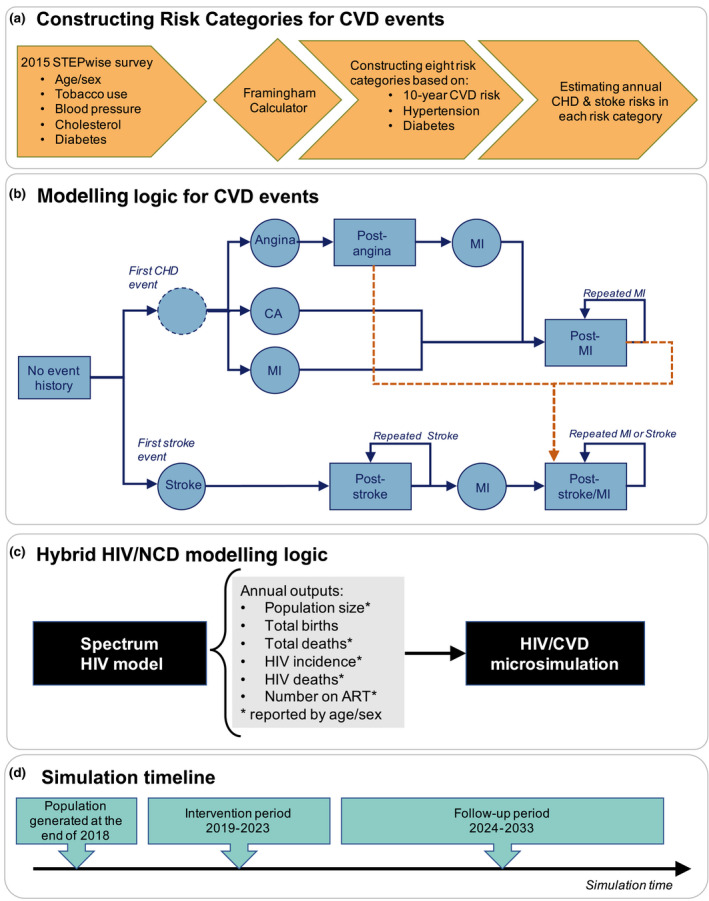Figure 1.

Hybrid HIV/CVD model overview. Panel A illustrates the method for defining eight cardiovascular disease (CVD) risk categories using data from the 2015 STEPwise survey in Kenya. Panel B shows the schematic model of CVD events, namely cardiac arrest (CA), angina, myocardial infarction (MI) and stroke. Following a CVD event, individuals experience a probability of acute mortality in the first year. If they survive, they subsequently move to a post‐event state in which they experience an increased annual risk of mortality, risk of new/repeated CVD events, and disability for future life years lived in the model. Dashed arrows showed in orange mark the risk of stroke among those in post‐cardiovascular heart disease (CHD) states. Panel C shows the relationships and flow of information between Spectrum and the HIV/CVD microsimulation. Panel D shows the simulation timeline, starting in year 2019 and ending in 2033. Annual outputs from the Spectrum model are used to inform the demographic processes and HIV dynamics in the HIV/CVD microsimulation. To ensure a precision of results, the baseline and intervention scenarios are modelled across 2000 random simulations. All outcomes are reported as median values across these simulations.
